Once a battleship's hull had been assembled, the builder was faced with the task of getting it into the water. Launch was the most difficult and involved part of building a ship, as tens of thousands of tons of steel had to be slid down into the water without damage to itself or to the surroundings.1
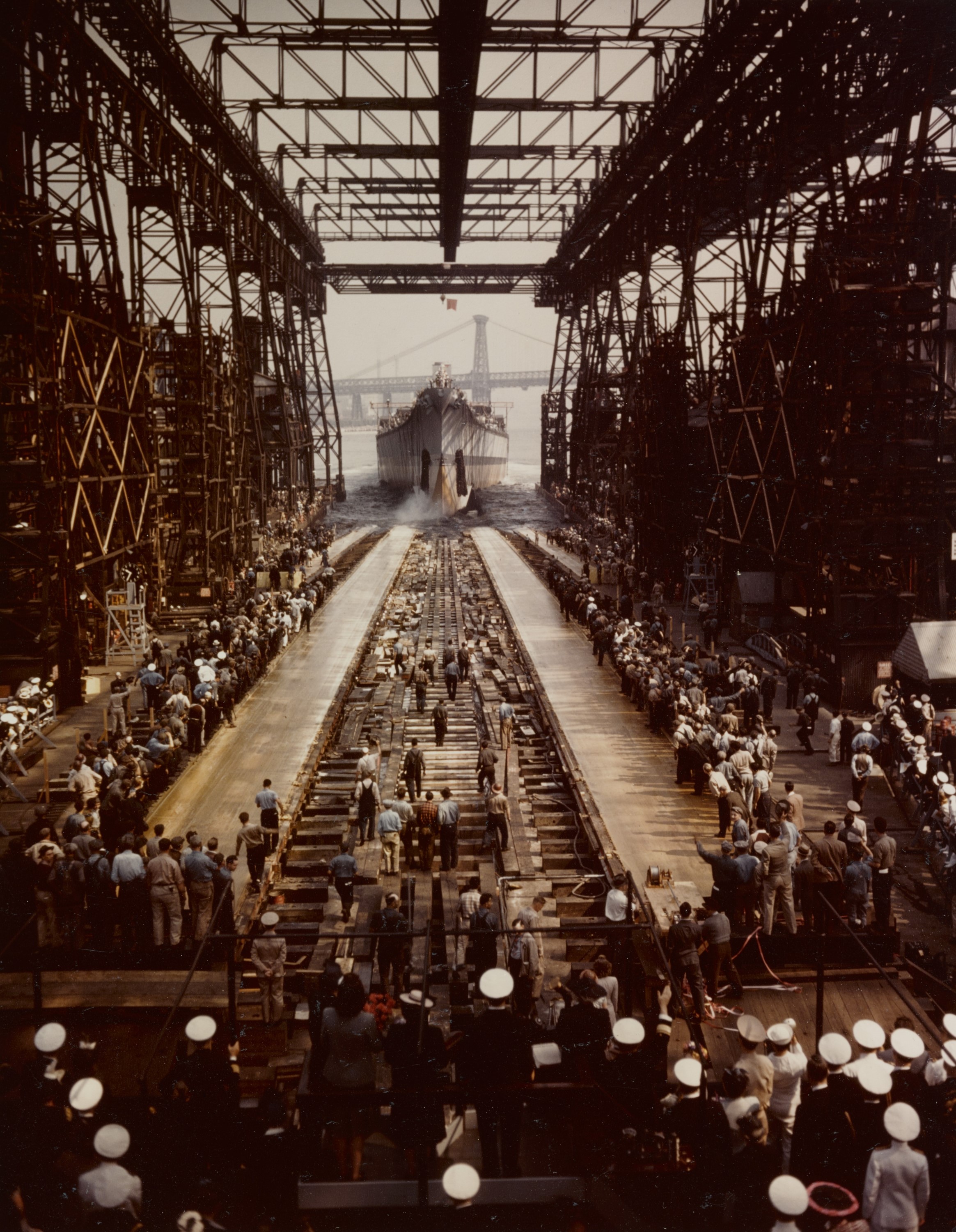
Iowa slides down the ways
This was harder than it sounds. A careful balance had to be struck between making sure that the hull didn't hang up on the launching ways, the concrete tracks that it was built on, and making sure that it didn't go into the water so fast that it got damaged or ran into the opposite bank, a particular problem for yards on narrow rivers. Possibly the most fraught part of the process was when the ship left the ways, which didn't extend very far below the surface of the water. If the stern of the ship wasn't buoyant enough when the center of gravity passed the end of the ways, the bow would tip up, which was unlikely to end well. If things went well, the loads would instead be concentrated on the bow as the stern started to float, which meant that the launching cradle, the ways, and the bow itself all had to be specially reinforced.
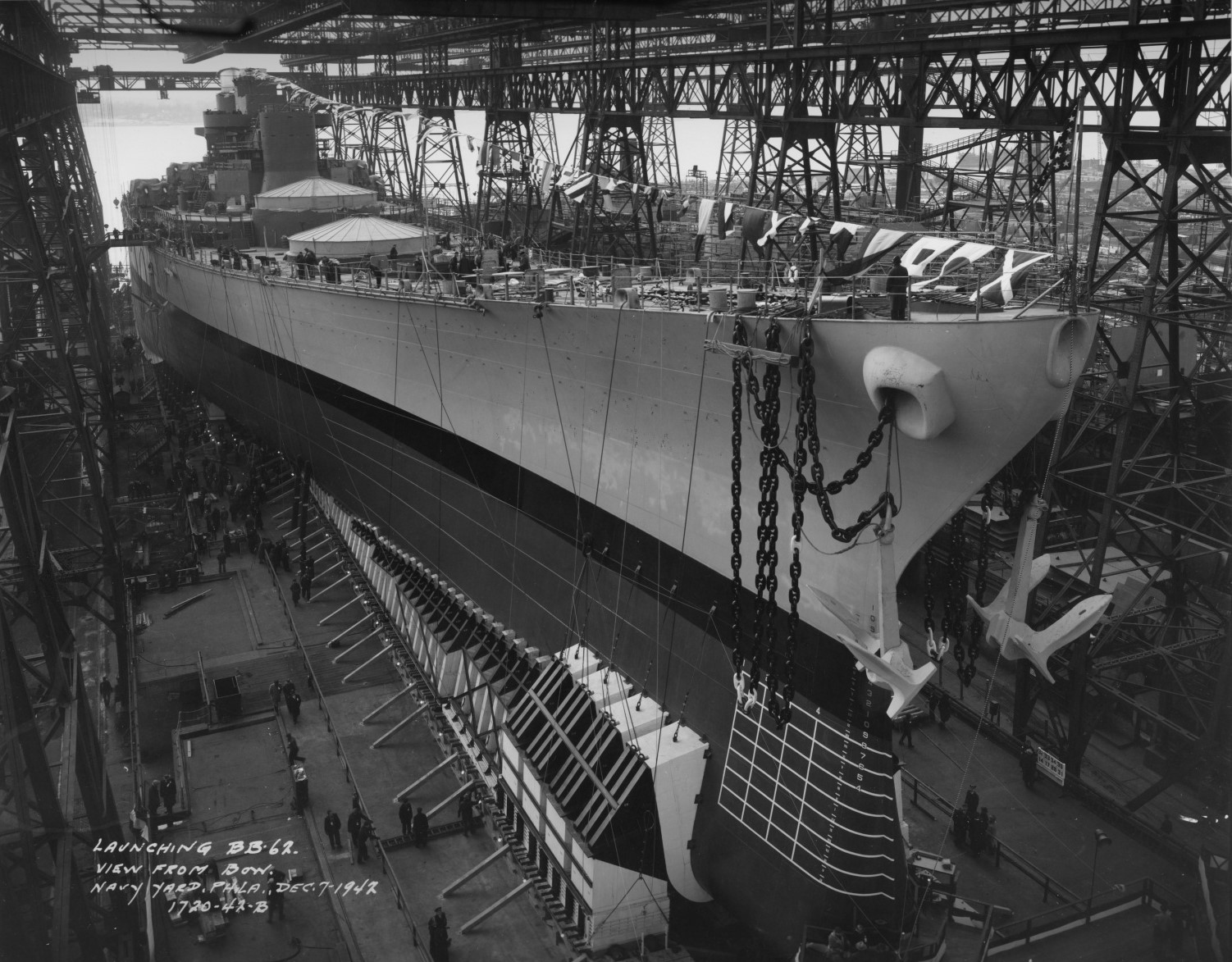
New Jersey just before launching, showing the fore poppet and some of the main cradle
Weeks before the ship was launched, crews set to work building the cradle. First, the ways were covered with grease and wax, to ensure that the ship would slide freely. On top of this were laid timber sliders, which the rest of the cradle was built on. Most of the cradle was made of wood, which was relatively cheap, floated so it was easy to recover after launch, and was the weakest element in the system, making sure that the hull and ways weren't damaged during the launch. The central section of hull was supported by the so-called solid packing, blocks of wood built up to the turn of the bilge. At the top were specially-shaped blocks to match the curve of the hull. At the ends were the fore and aft poppets, specially designed to support narrow, heavy sections of the hull and using steel in addition to wood.
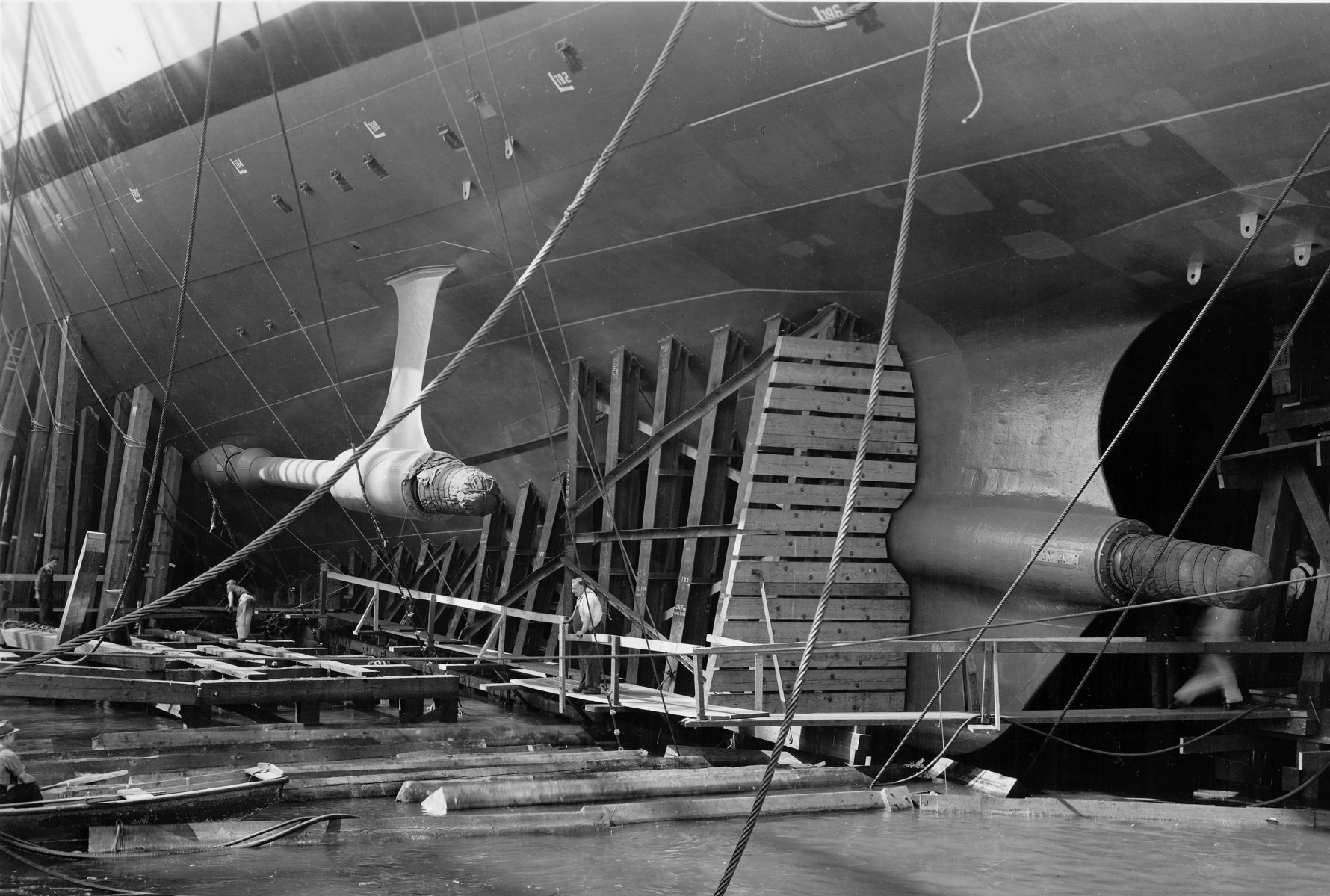
Iowa's aft poppet
After the cradle had been assembled and the ship made ready for launch,2 the process of transferring the ship's weight to the cradle began. Wedges were driven in to lift the cradle, which would then support the ship's weight. Then the side shores that the ship had previously rested on were removed, followed by the keel blocks. This was all done in the few hours before launch, and things had to move quickly to avoid the ship's weight squeezing the grease out from under the cradle. Before any of this was done, the tide was double- and triple-checked to make sure that there would be enough water to launch the ship safely, but that tidal currents wouldn't carry it somewhere dangerous.
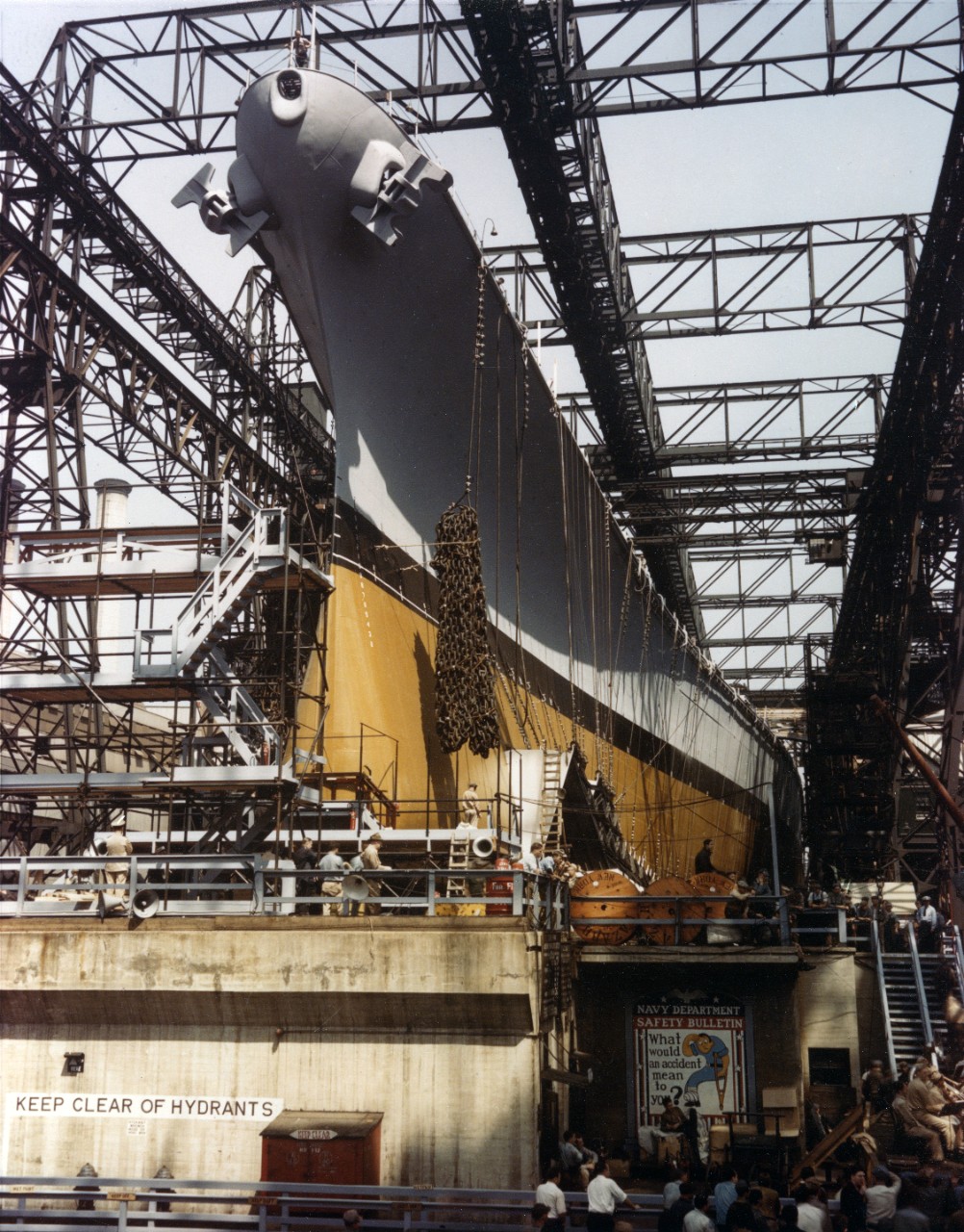
Iowa shortly before launch. Note the chains, carried to slow the ship after she entered the water, and the forward poppet.
Then it was time for launch. Some launches were conducted with great ceremony, while others were fairly low-key. Traditionally, there were speeches by representatives from the Navy, the shipyard, and probably from the ship's sponsor, a woman3 who would christen the ship with champagne.4 The size and spectacle of the ceremony varied with the importance of the ship, and sometimes the guests. In Britain, the Admiralty in around 1910 allowed up to £120 for entertainment if a member of the Royal Family was attending the launch, but only £40 otherwise.
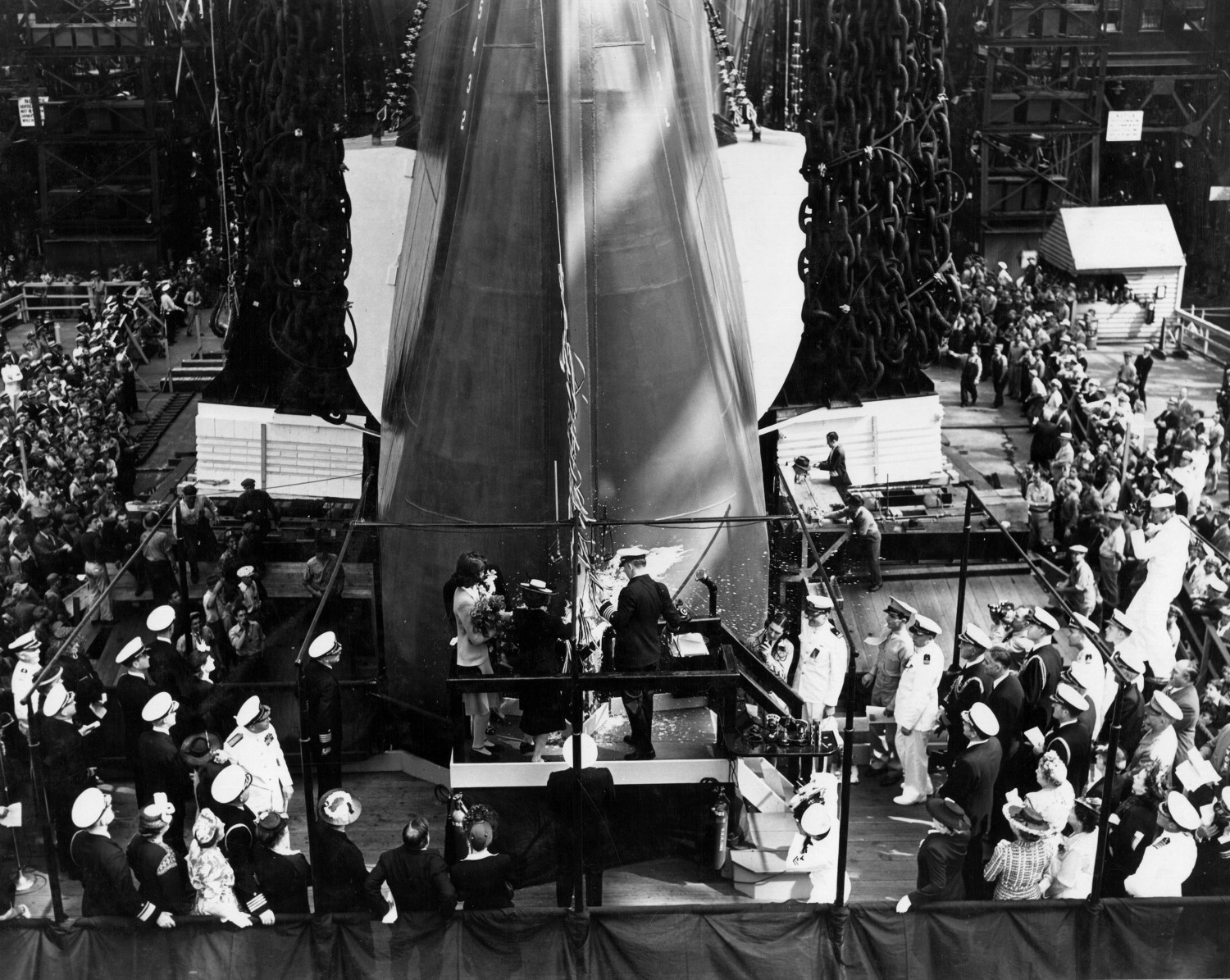
Iowa is christened by Mrs. Ilo Wallace
At last, it was time for the ship to enter the water. The sponsor would swing the bottle and name the ship, traditionally followed by "May God bless her and all who sail in her." A crew nearby would throw a trigger, releasing the ship, which would hopefully begin to slide down the ways. This occasionally didn't happen, the most famous incident probably being the launch of the frigate Oliver Hazard Perry, when the ship refused to move for several minutes due to grit in the grease, and finally began to go just as John Wayne, who was at the launch, appeared to give the ship a push.
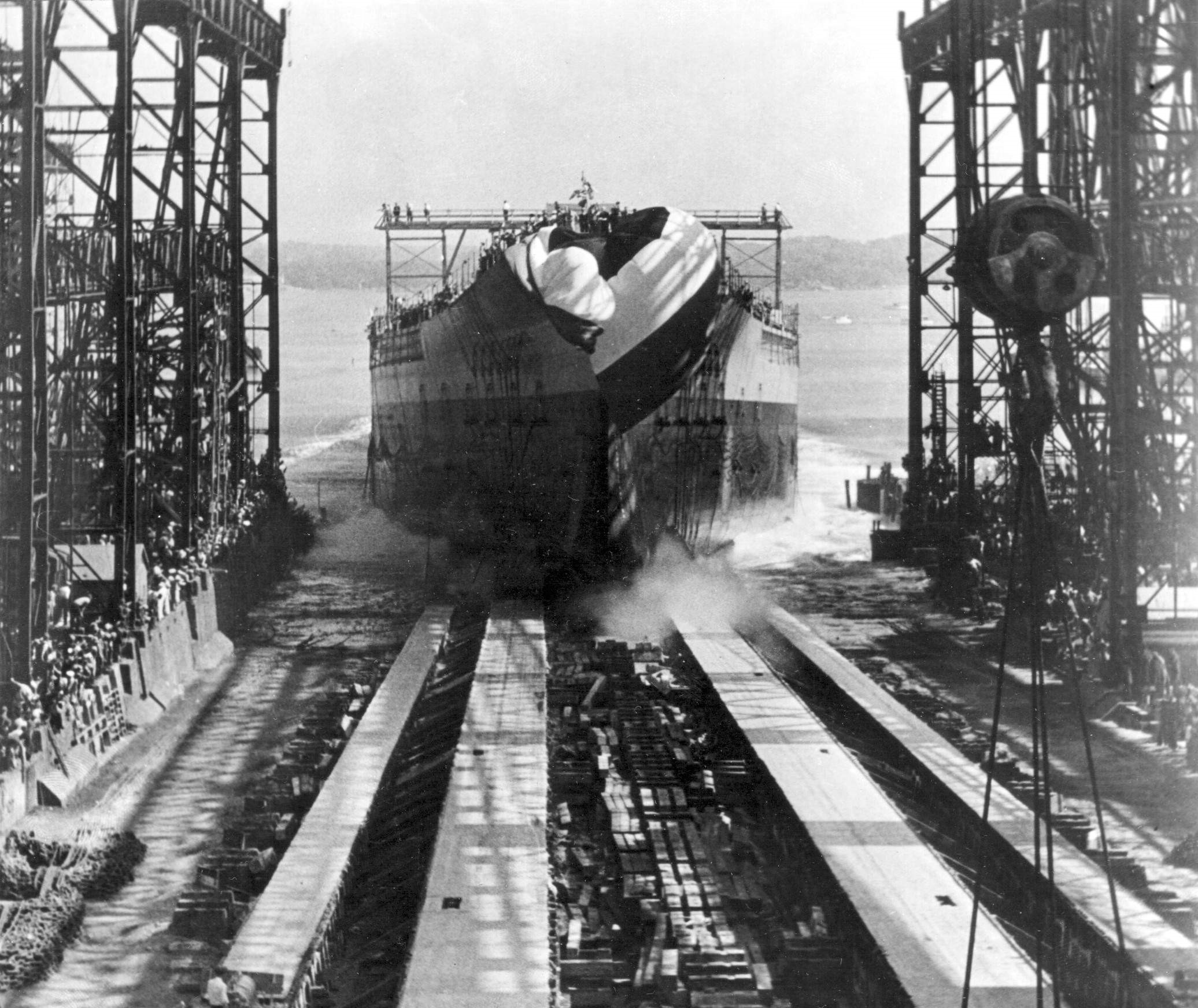
Massachusetts enters the water for the first time
Once the ship was moving, it was really hard to stop, and disaster potentially followed if it did. Anything which had not been cleared out of the way would be destroyed, possibly damaging the ship in the process. Cradle failure could strand the ship on the ways, a position that was almost impossible to recover from. Once the stern began to lift, the bow poppet would have to absorb about 20% of the weight of the ship, and it was usually designed to crush to deal with this weight. However, should it crush too much, the bow might have hit the ground between the ways, something the naval architects were careful to make sure didn't happen. Worse, stability at this point was very marginal, as much of the weight was still supported from low down. But eventually, the bow ran off the ways and the ship was fully afloat. Because of how quickly the ways stopped, this was often before the bow was deep enough in the water to be fully buoyant, and it could drop several feet. If the ship wasn't moving fast enough, the plunging bow could hit the ways, damaging the ship.5
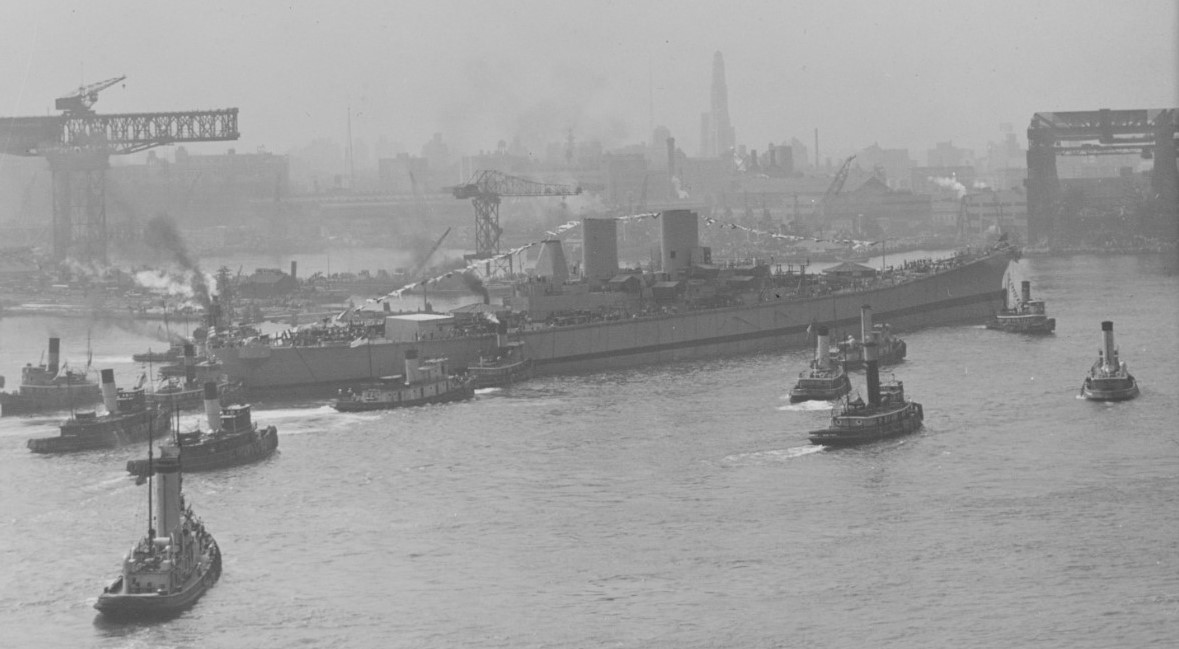
Iowa under the control of the tugs
Then it was the job of the tugs standing by in the channel to bring the ship under control and pull the cradle, held on by several hundred tons of buoyancy, clear.6 Many shipyards were on narrow rivers and this could be tricky. At Bath Iron Works, for instance, high winds acting on lightly-loaded ships threatened to trap them against nearby bridges. After it was secured, the newly-launched hull was maneuvered to a nearby dock and tied up, ready to be fitted out and turned into a warship, a process we will discuss next time.
1 Not every battleship was launched as described, although the vast majority were. Yamato was built in a drydock, and the American Montanas would also have been drydock-built if they hadn't been cancelled. The French used a similar system for Jean Bart, although it wasn't technically a drydock. Drydock launches are considerably less exciting, consisting simply of filling the dock and removing the cassion. Since WWII, the practice has become standard for large warships. ⇑
2 This included testing for watertightness by filling each compartment with water and seeing if any leaked out. ⇑
3 Warships have been universally sponsored by women since the late 19th century, although the practice seems to have originated in the middle of that century, and before that, men sponsored most ships. The woman is usually someone who has a connection to the vessel or its namesake, such as Margaret Truman, who sponsored Missouri. ⇑
4 Other liquids were sometimes used, including brandy and whisky. During Prohibition, some American warships were christened with water, others with various beverages. ⇑
5 There are other things that can go wrong at this stage. One of the weirdest is the case of the pre-dreadnought Albion. A wave created when she entered the water destroyed a stand with approximately 200 spectators in it, ultimately killing 34, mostly women and children. ⇑
6 Some shipyards use the ship's own motion to do this, securing the cradle to shore and just holding it as the ship moves on. ⇑

Comments
I'm curious how they did the watertight testing. How did they fill every compartment? I'm envisioning a hose with a hatch/nozzle combination.
I'm not sure offhand, although I can look when I get home. I believe there were fittings in the bulkheads for such testing, which also let you do things like dewater a compartment without opening the door, or at least check that said compartment isn't full of water before you go in.
Looks like it was a special hatch cover with a couple of hoses in it, one to fill the compartment, another leading up to a bucket to ensure there's enough pressure head (usually 10' above the deep waterline.)
I guess drydocks were expensive enough before then that it wasn't really practical to build all your battleships in them?
I was wondering why they didn't build the ship in a pit below water level, and block it off with a single-face cofferdam. Sort of like a cheaper, slower-cycling drydock.
That was a lot of it, yeah. The traditional way of building ships doesn't require a lot of capital, which was seen as important at the time. These days, with lower construction rates and more sophisticated ships, the rules are different.
Wouldn't lower construction rates argue in favor of a way of building that doesn't require a lot of capital while the higher construction rates of old would be better suited to more capital intensive production.
Not necessarily. It's probably better to say that the capital-intensive building style works better when you have a reasonably consistent production run to amortize over, which was very much not the case pre-1945. You'd see huge swings in build rate for a given ship type, most notably going from small numbers in the 20s and early 30s to huge volumes in the 40s and then much smaller volumes postwar. Slipways work well for this because the capital invested in each is pretty small, and so capacity is cheap to expand and you don't have to feel bad about mothballing it if you only use each a few times. Today's industry is built around a reasonably predictable build rate, which we can't scale as quickly, but we'll get cheaper ships.